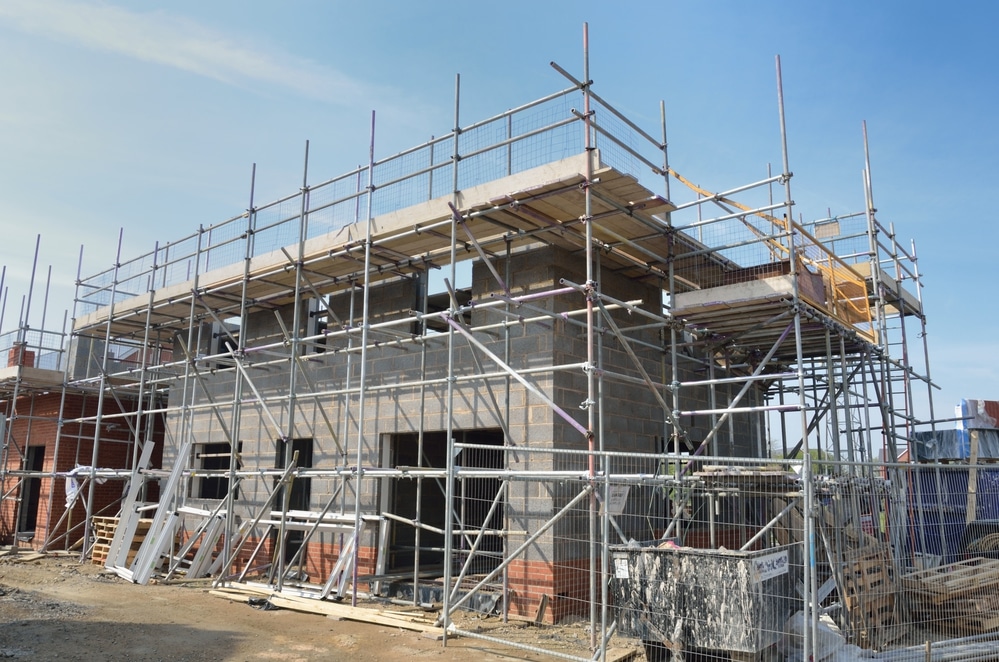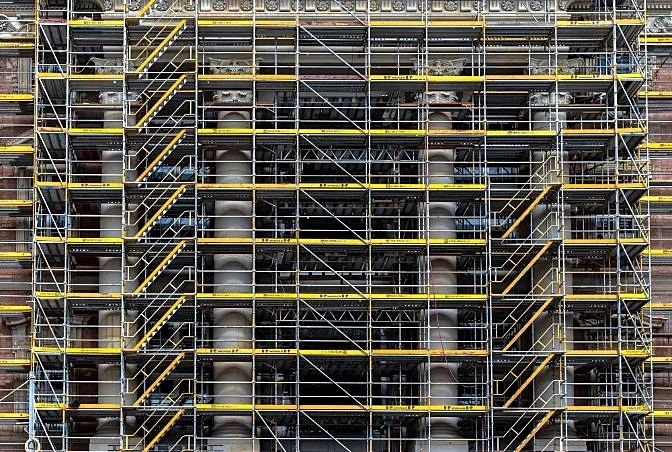Scaffolding Guildford: The Best Option for Your Building and Renovation Projects
Wiki Article
Discovering the Various Kinds Of Scaffolding Made Use Of in Building Jobs
The building sector counts heavily on various kinds of scaffolding to meet certain task demands, each offering unique benefits and applications. Conventional structure scaffolding offers a tough foundation for basic tasks, while suspended scaffolding is important for service skyscraper structures. Various other choices, such as system and rolling scaffolding, accommodate effectiveness and wheelchair, specifically. Additionally, the cantilever alternative proves very useful in city settings where room is constrained. Recognizing the nuances of these scaffolding types is vital for enhancing safety and performance on building and construction websites, motivating a closer exam of their one-of-a-kind qualities and applications.
Standard Frame Scaffolding
Traditional structure scaffolding is among one of the most commonly utilized methods in the building industry due to its toughness and flexibility. This system is composed of horizontal and vertical frames that are set up to create a secure platform for workers and materials. The main elements include upright articles, horizontal ledgers, and diagonal braces, which with each other provide a solid structure that can sustain significant loads.Among the crucial benefits of traditional structure scaffolding is its versatility to various building and construction tasks, varying from residential structures to large business structures. The modular layout permits for easy setting up and disassembly, making it reliable for both long-lasting and short-term projects. Additionally, the system can be personalized in height and width, fitting various structure layouts and site conditions.
Safety and security is paramount in scaffolding applications, and traditional frame systems are outfitted with guardrails and toe boards to protect against drops and ensure worker defense. Moreover, routine inspections and adherence to safety and security regulations are essential in keeping the integrity of the scaffold. Overall, conventional structure scaffolding stays a fundamental choice in the construction industry, providing a dependable system for labor and boosting overall job effectiveness

Suspended Scaffolding
Suspended scaffolding uses a special service for construction projects that call for accessibility to elevated surface areas, especially in situations where typical frame scaffolding might be unwise. This kind of scaffolding is commonly suspended from the roofing or top levels of a structure, making use of a system of pulleys, ropes, and platforms to develop a functioning room that can be adapted to different elevations.One of the main benefits of put on hold scaffolding is its versatility. It can be quickly rearranged or reduced to accommodate adjustments in building and construction demands, making it optimal for jobs such as home window installment, façade job, and upkeep on skyscraper structures. In addition, the minimal footprint of put on hold scaffolding enables far better use ground room in city atmospheres, where area is often limited.
Safety and security is a vital factor to consider in the usage of suspended scaffolding. On the whole, suspended scaffolding offers a effective and effective solution for accessing hard-to-reach areas in different construction scenarios, improving both productivity and safety on site.
System Scaffolding
System scaffolding, frequently considered as a contemporary service in the scaffolding sector, contains pre-engineered parts that can be rapidly assembled and adapted for different building jobs. Scaffolding. This kind of scaffolding is identified by its modular style, which permits adaptability and effectiveness on job sites, fitting structural requirements and various elevationsUsually made from high-strength steel or light weight aluminum, system scaffolding supplies enhanced resilience and stability. The components consist of upright messages, horizontal journals, and diagonal braces, which adjoin securely, making certain a robust framework. The layout frequently incorporates standardized installations, streamlining setting up and disassembly procedures, consequently reducing labor time and prices.

Rolling Scaffolding
Rolling scaffolding is a flexible alternative to standard set scaffolding, designed for flexibility and ease of use on building websites. This Scaffolder Surrey sort of scaffolding is composed of a platform sustained by frameworks with wheels, allowing workers to quickly transfer it as needed. The mobility attribute dramatically improves productivity, as it decreases downtime connected with constructing and disassembling fixed scaffolding.Generally created from lightweight products such as aluminum or steel, rolling scaffolding supplies a sturdy yet mobile service for jobs calling for frequent repositioning - Scaffolding. It is especially beneficial in jobs such as painting, drywall installment, and electric work, where access to numerous elevations and places is essential
Security is critical in rolling scaffolding style, with functions such as locking wheels to prevent unplanned activity when being used, and guardrails to secure employees from drops. Additionally, numerous models are adjustable in elevation, accommodating numerous task demands.
Cantilever Scaffolding

The style of cantilever scaffolding generally includes using arms or braces secured to a building or framework, enabling the platform to prolong outside safely. Security is critical; therefore, these scaffolds must be crafted to stand up to ecological conditions and numerous tons. Regular inspection and upkeep are necessary to ensure structural honesty and worker safety.
Cantilever scaffolding is favored for its flexibility and effective use room, making it a prominent choice in urban settings where area restraints are common. It assists in much easier access to high altitudes, ultimately contributing to the overall effectiveness of building projects. Just like all scaffolding types, appropriate training and adherence to safety criteria are vital for workers using cantilever scaffolding.
Final Thought
Standard structure scaffolding provides stability, while put on hold scaffolding supplies flexibility for elevated tasks. System scaffolding helps with fast setting up, and rolling scaffolding boosts wheelchair for varying work environments.Traditional structure scaffolding gives a strong foundation for general jobs, while put on hold scaffolding is crucial for work on skyscraper structures.Moving scaffolding is a versatile alternative to conventional set scaffolding, made for flexibility and ease of usage on building and construction sites. As with all scaffolding types, correct training and adherence to safety criteria are essential for employees utilizing cantilever scaffolding.
Typical frame scaffolding gives stability, while suspended scaffolding offers adaptability for raised tasks. System scaffolding facilitates quick setting up, and rolling scaffolding improves wheelchair for differing work settings.
Report this wiki page